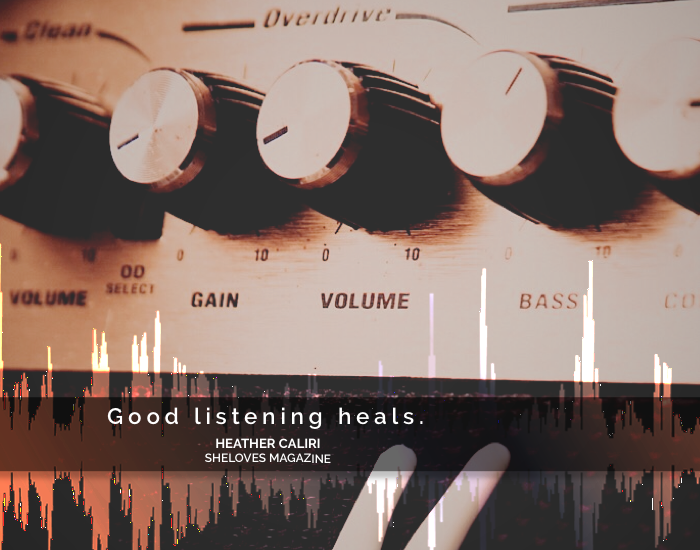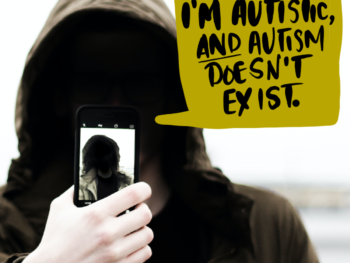
Not long after my husband Dyami and I got married, he bought a subwoofer. For those of you not conversant in audiophile jargon, a subwoofer is a speaker “dedicated to the reproduction of low-pitched audio frequencies known as bass.” The subwoofer was about the size of a large end table, heavy as all get out, squat, aggressively black.
Basically, it looked like it belonged at a Metallica concert.
When Dyami told me, face alight, that he’d purchased said subwoofer, and it would be delivered quite soon, I hesitated, because truly, the excitement in his eyes was infectious.
But I did not think that subwoofer would exactly fit my decorating aesthetic, even though, at that point, I had no idea what said aesthetic was. I just knew it wasn’t heavy-metal.
We didn’t have a lot of furniture back then. No coffee table, no side table. Just a white couch and, after the delivery, a giant black box in the middle of the floor that made the walls move when you turned it on.
Dyami came by his love for low frequencies honestly; he played bass in our church’s worship team. For a while, going on church housebuilding trips to Mexico, dubbed “Homes for Hope,” he’d joke about starting an offshoot, “Home Theaters for Hope,” which would give needy suburban families access to surround sound.
I fell in love with him on stage in church services when I sang on the worship team, with him sitting behind me, holding his guitar. He would make quiet jokes, deadpan, while I tried not to snort audibly into my microphone.
Writing these words, I went upstairs to ask him about the white (well, black) elephant that sat awkwardly in our living room for years, until—you guessed it!—we had kids.
“What was the subwoofer for again?” I asked, meaning its function.
He looked at me, his face wistful.
“It was for happiness,” he said.
But honestly, the subwoofer and I never really got along.
One afternoon, not long after he bought it, I started to set my laptop on top of the live amplifier. He yelped, and lunged at me as if saving a baby from flame. (Considering that I had my writing life on that computer, his urgency was warranted.)
“That could erase your hard drive,” he said, guiding me to our dining table.
“I see,” I said, though I didn’t.
“It’s got a huge magnet in it,” he said. “Like, giant.”
I nodded, bewildered, thinking, but not asking, A giant magnet? But why?
It was before Google was a verb, so I only just now looked up why amplifiers use magnets. The speaker sends an electrical current back and forth through the electromagnet, creating a magnetic field whose poles reverse back and forth. That oscillates the magnet, creating vibrations. It’s attached to the cones in the speakers, which amplify the vibrations, producing audible sound.
(I’m not a technophobe, but sometimes the sheer complexity of everyday objects catches me off-guard. A magnet, humming there in our living room, erasing memory like electrified Alzheimers. Who knew?)
My husband and I have been married for 15 years. He made me laugh when we were 25; he makes me laugh now. But I will not surprise anyone to say that that subwoofer is not the only conflict we’ve had while living together. There were years when we struggled to know how to turn the current between each other into anything resembling music.
Back then, I blamed myself. Or, I blamed my husband. I thought that if I weren’t so prone to anger, if he weren’t so critical, if he would just listen, if I would just change—
Everything would be better.
I concentrated so much energy in those years on going very still, trying not to vibrate my feelings to rattle our windows or his composure. It didn’t really work—I either ended up losing control and spewing my pent-up frustration out in anger, or not communicating enough with my husband to help us work as a team.
In many ways, we were admirably paired: we laughed together, were well-matched in intelligence and temperament, and we both have an unusual fondness for cabbage. I like my husband, I love him, which is why it bewildered me to hurt him, and vice versa.
Last year, we got some therapy—one step in a long process we’ve both engaged in to help our marriage. In the first session, our therapist asked us what our goals were.
I blinked. It was as if we were sitting with a personal trainer, or a financial advisor. As if marriage were an everyday object that, despite its complexity, could be tinkered with and improved.
Sitting on the couch, taking her suggestions, revisiting past hurts with an eye to heal them, I was truly astonished at how simple the tools we needed were. Mostly, it was better listening: pretending to be a journalist while my husband shared about a particular memory or concern, asking questions without judgement until we both felt satisfied I understood his point of view. Then, we’d switch roles.
I’m not a bad natural listener, but it took work not to jump in, contradict, or argue. It took work to see old conflicts through his eyes. It surprised me how often I misheard even when I tried to understand him.
But what surprised me most was this: good listening heals. It allows us to pick up and reflect back the deep bass notes of our spouse’s longing, hurt, and love. Real listening and understanding helped draw us back together with crazy-as-all-get-out magnetic force.
Most nights after our kids go to bed, my husband and I pad into our kitchen, and get bowls of cereal—him, Crispix, me raisin bran. We settle next to each other on the couch and find a murder mystery series: we’re almost through the 19 seasons of Midsomer Murders. We pour the milk as the title sequence starts and then we lean forward, trying to guess who the villain is, trying to recognize faces from the very small stable of British actors from other episodes or series. We make fun of ridiculous plot twists. We trade foot rubs.
Sometimes now, so in tune with my husband, I think back to that bare living room of our early marriage, full of hope and bewilderment, of wires that sometimes got crossed, and that one ridiculously loud, much loved subwoofer. I remember how brittle I was back then, so quick to assume I—or we—had a fatal flaw, when instead, our biggest problem was that we needed good advice, deep practice and better hearing.
What was all that hurt and struggle for?
It took a while, but I think I know the answer. It was for happiness.


